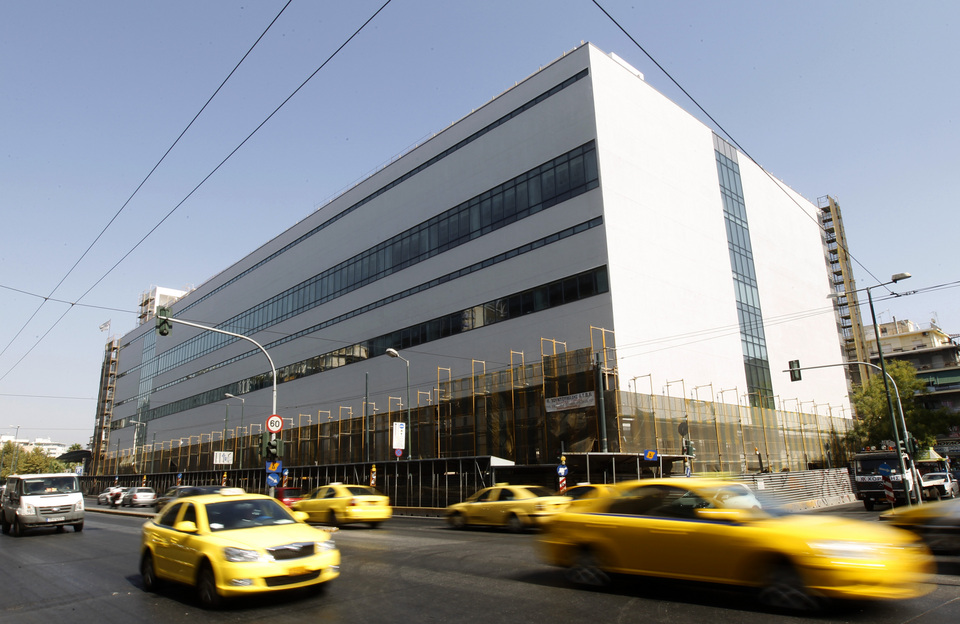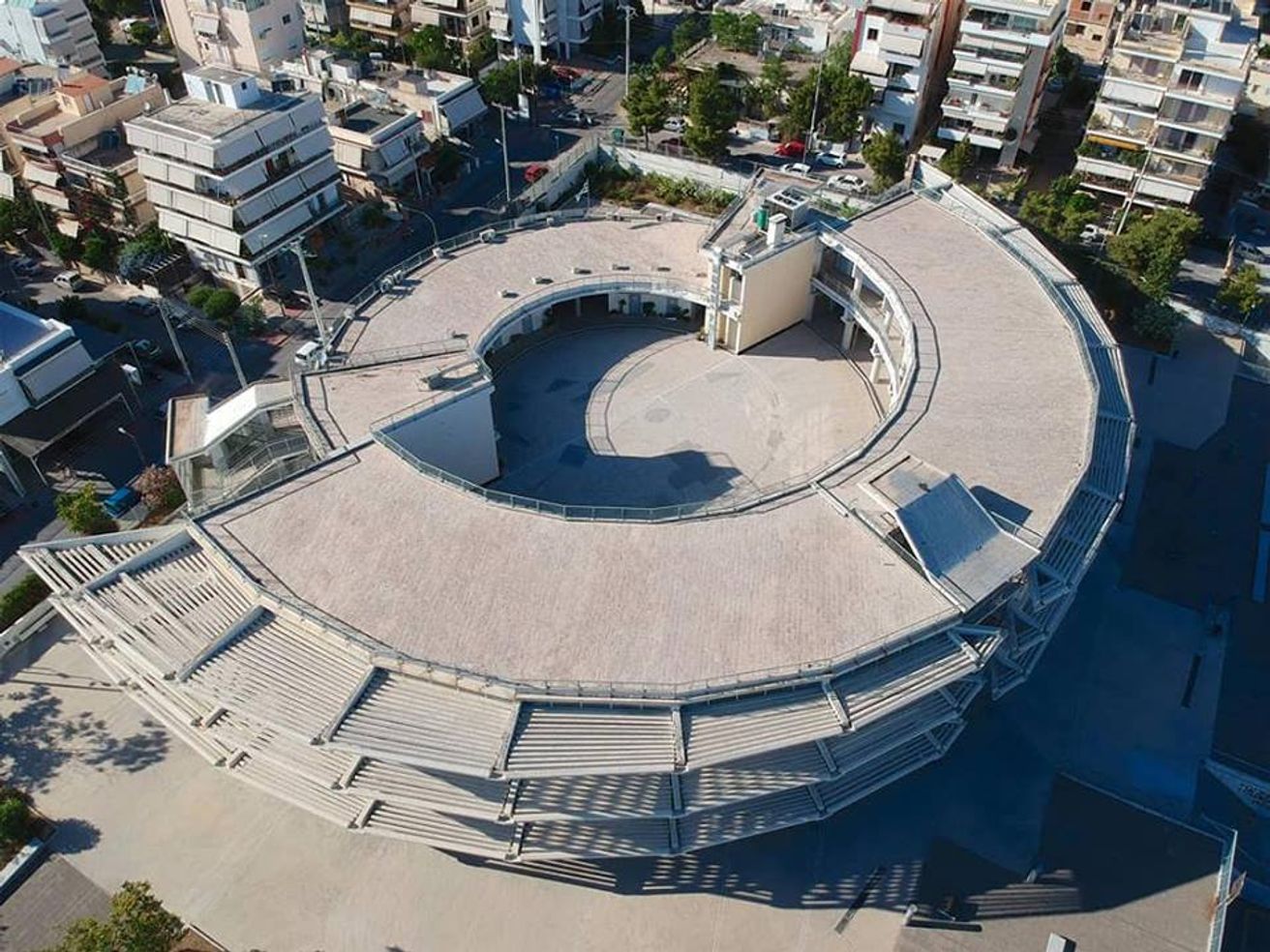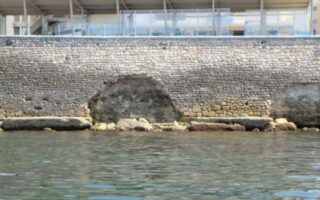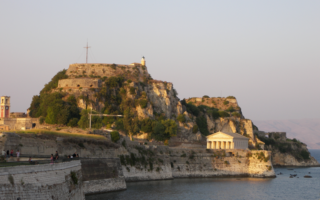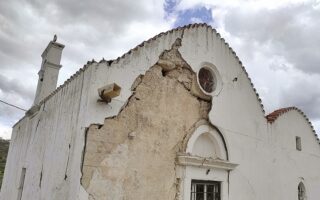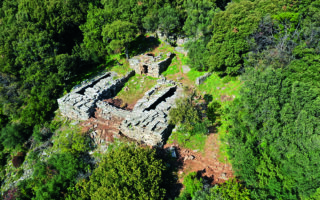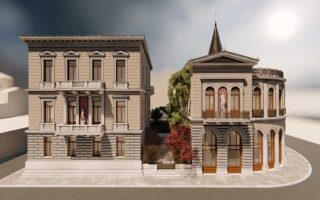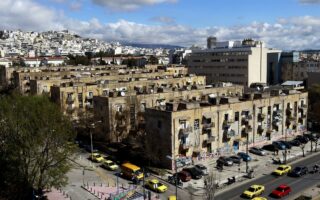Takis Zenetos: Architect, visionary and ‘futurist’
Magazine editor talks about new publication of previously unreleased material and how it offers a glimpse into a cutting-edge mind
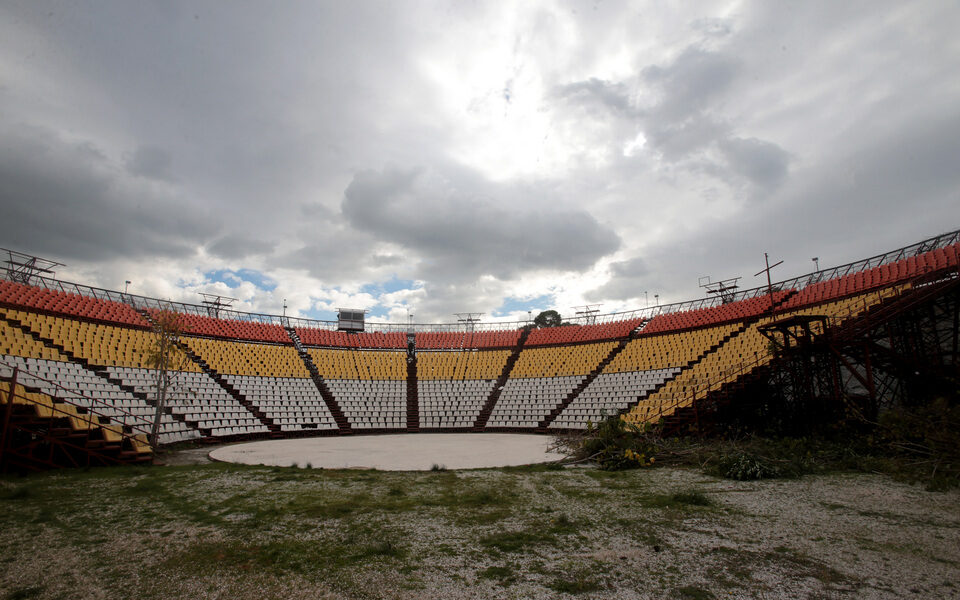
A building of almost unreal appearance strikes a contrast among the city blocks of Agios Dimitrios. Like a spaceship ready to take off down the straight run of Vouliamenis Avenue, it looks like something that has come from another galaxy. Yet it is not some grandiose futuristic monument, but a public school that is fondly known by the residents of this Athens suburb as “the disc.”
It resembles another disc, in the center of the capital. Made of steel, like a giant radio telescope it peers into the sunset from an elevation of 300 meters and for half a century hosted all sorts of shows: It is the Lycabettus Theater, perched in the hill’s old quarry like a flying saucer.
Unfortunately, the pioneering output of the architect of these two discs, Takis Zenetos – a man with a mind as expansive as his work – ended with a leap into the void in 1977. He was 51 years old. Since then, the bulk of his archive had remained untouched. That was until the architectural magazine ek published “Zenetos 2022 – Archival Material and New Critical Studies” (in Greek only), bringing the public unpublished material on his work for the first time.
Kathimerini spoke to award-winning architect and ek editor in chief Ariadni Vozani about this new publication on the visionary Takis Zenetos.
How did the magazine get its hands on Takis Zenetos’ private archive?
I have always admired his work, but I do not think that the scope of his genius has been properly appreciated, in part possibly because of the strength of his legend. When we at the magazine decided to do a tribute to him, it was not at all obvious that we’d have access to his archive. My fellow editor in the publication, the president of the Greek Institute of Architecture, Professor Elias Constantopoulos, and I started our research in the archives of the journal Architektonika Themata (Matters of Architecture), where Zenetos had regularly published work. We were surprised, however, to see that all of the original material had been removed from the relevant folders. That’s when I plucked up the courage to contact Elina Zenetou, the architect’s daughter. She confirmed that his archive was unsorted and that it would take a lot of time and effort to go through it. We agreed initially that I would look at his drawings, but later, thanks to the trust Ms Zenetou showed me, we were able to start putting together the fragments of an entire world. We decided to digitize a selection of the material that would be included in the publication.
What is in the archive, and what moved or surprised you most?
No one knows the archive in its entirety. It is therefore essential that the task of getting it organized, stored properly and, effectively, salvaged – a task that is too daunting for his family – finds support and funding. Zenetos was an incredibly creative personality who worked and studied constantly, across a breadth of fields. His archive contains photographs, works of literature, scientific journals, paintings, constructions, writings and letters.
‘Zenetos was an incredibly creative personality who worked and studied constantly, across a breadth of fields’
I was particularly taken by the notes he had written himself. Instructive, critical, and more often expressing doubt rather than certainty, they illustrate the importance of that “split” that allows every important creative to do great things.
The biggest, surprise, however, concerned a running archive of every single thing he created. It is a valuable “inventory,” a synopsis, of his oeuvre. We just hope that all the original material relating to these projects also surfaces. In this book, we see drawings and mock-ups for unknown studies, while it also reveals his “interconnective” mind, how he linked architecture, painting and writing.
What does the publication contain and what can we expect from its presentation at the Stavros Niarchos Foundation Cultural Center (SNFCC)?
The first part of the publication comprises new papers on his work, while the second part presents published articles along with previously unpublished drawings and photographs. Eleven distinguished architects will speak at the event and we will also hear a part of an unpublished interview with Zenetos.
Beyond his well-known trilogy (the Agios Dimitrios School, the Lycabettus Theater and the Fix brewery), which other of his pieces do you consider important?
He mentions the apartment building on Amalias Avenue as being his best work. A 1,000-bed hotel he designed for Kifissias Avenue, but which never materialized, is also particularly interesting, as was his visionary study on “Electronic City Planning.” Decades before the experience of the pandemic, he had come up with transparent, gravity-free teleworking capsules in which the person could communicate via technology, thus drastically reducing transportation and offering people more free time, while the city is built above and beyond the valuable earth and natural landscape.
That sounds like something from the future.
He wrote an article in 1962 in which he defined himself as an architect, city planner and futurist – and I really believe that he was quite earnest. The dimension of future time is at the center of his entire oeuvre. The fascinating thing about Zenetos is that despite the seemingly extreme visionary character of his studies, he was also an incredibly grounded professional who was able to make the necessary compromises to materialize elements of his vision and bequeath us some truly incredible architecture.
The presentation of “Zenetos 2022 – Archival Material and New Critical Studies” will take place at the Stavros Niarchos Foundation Cultural Center (snfcc.org) at 6.30 p.m. on December 16.
